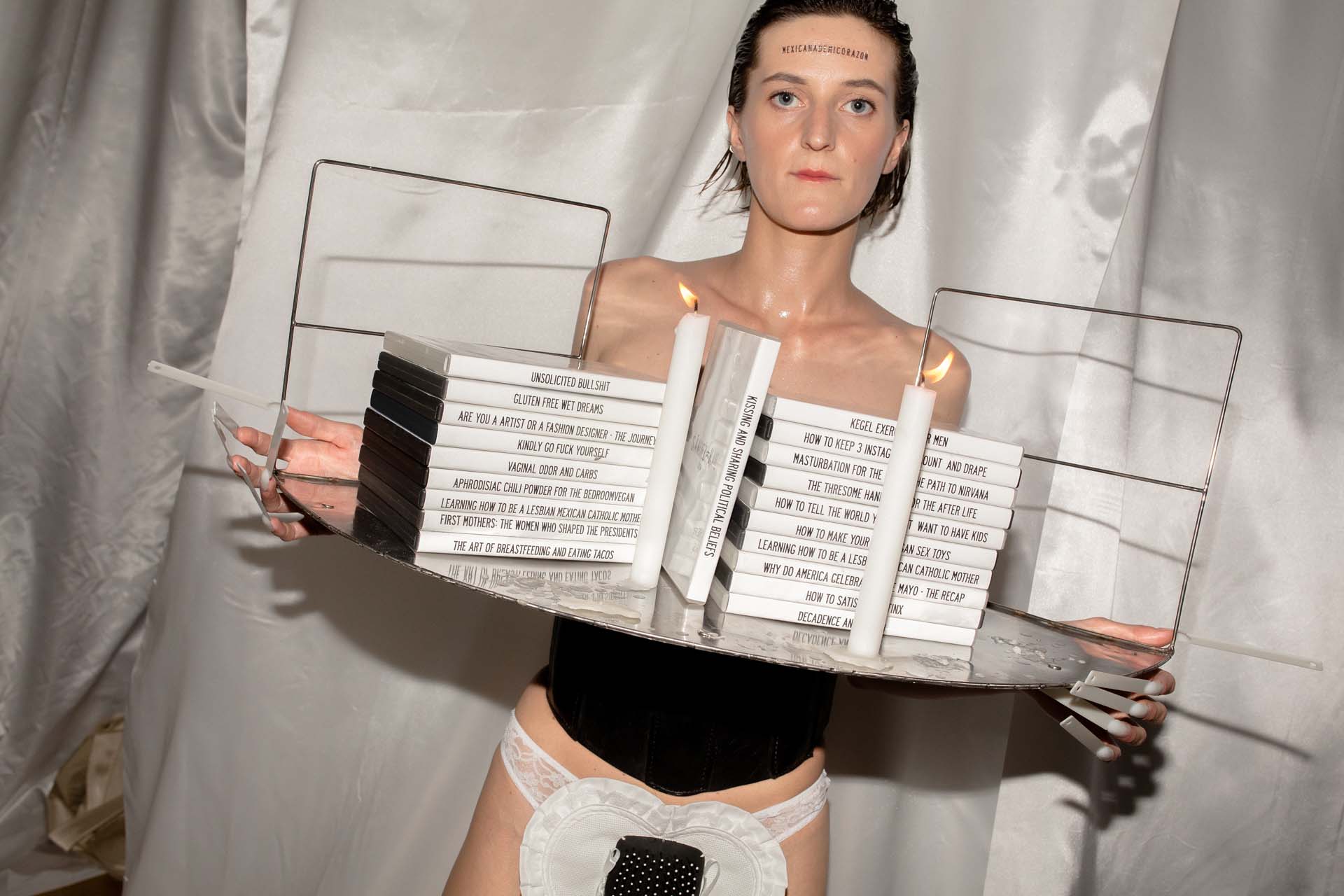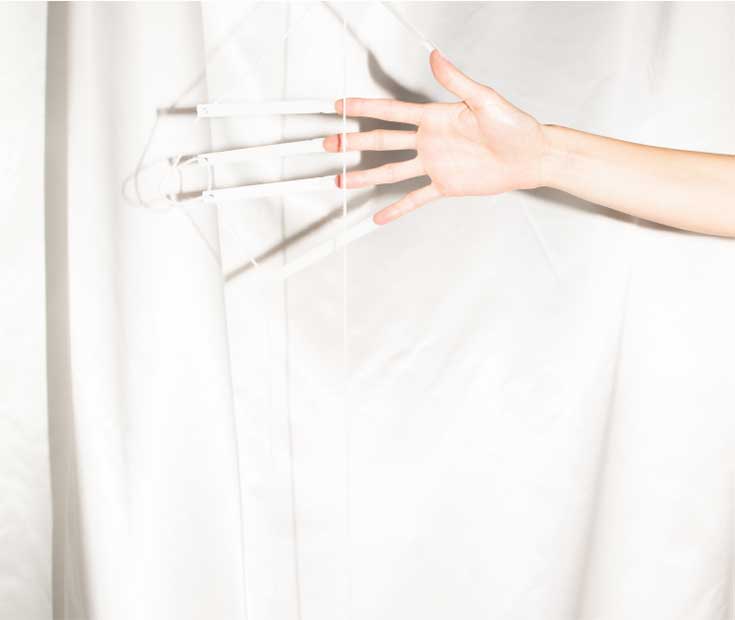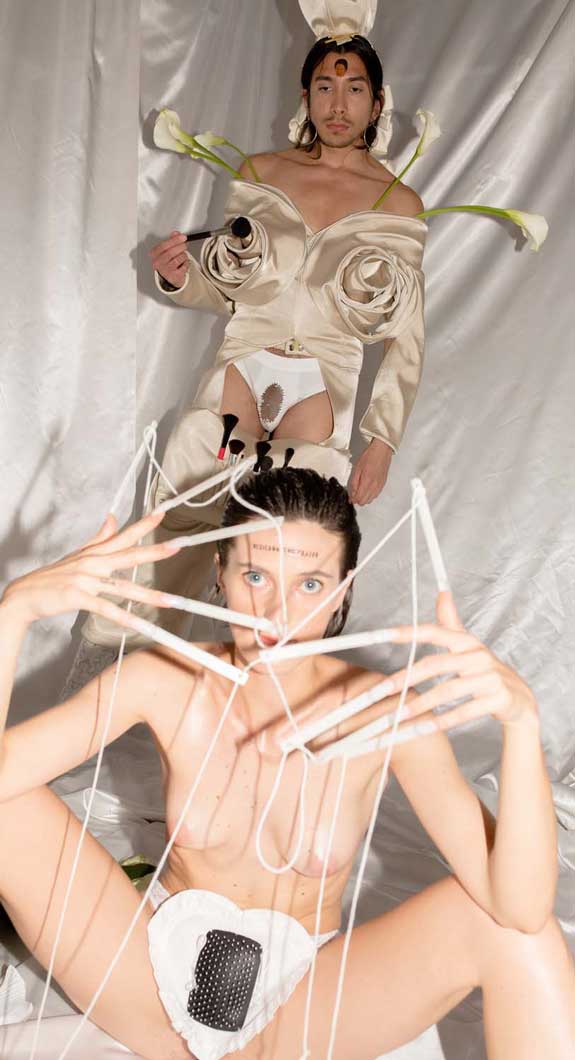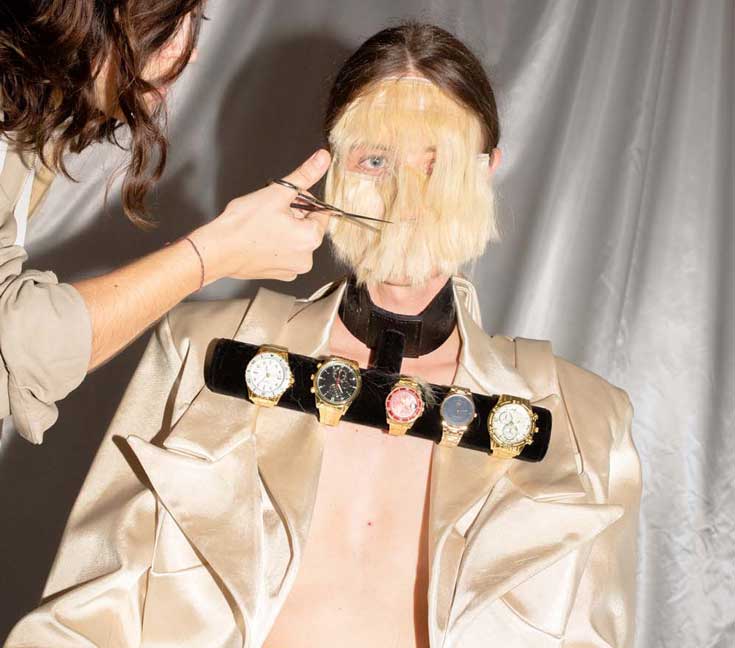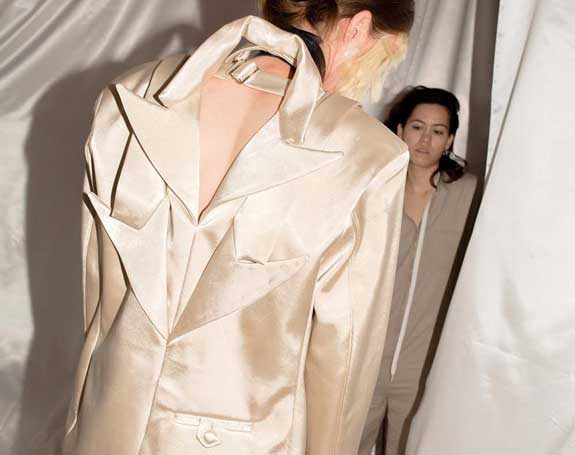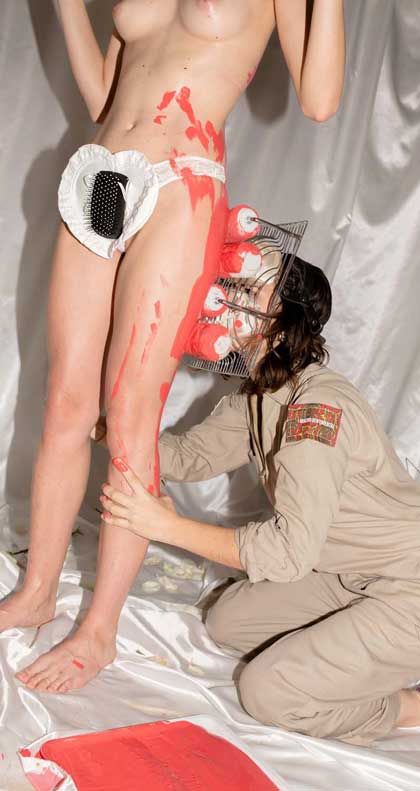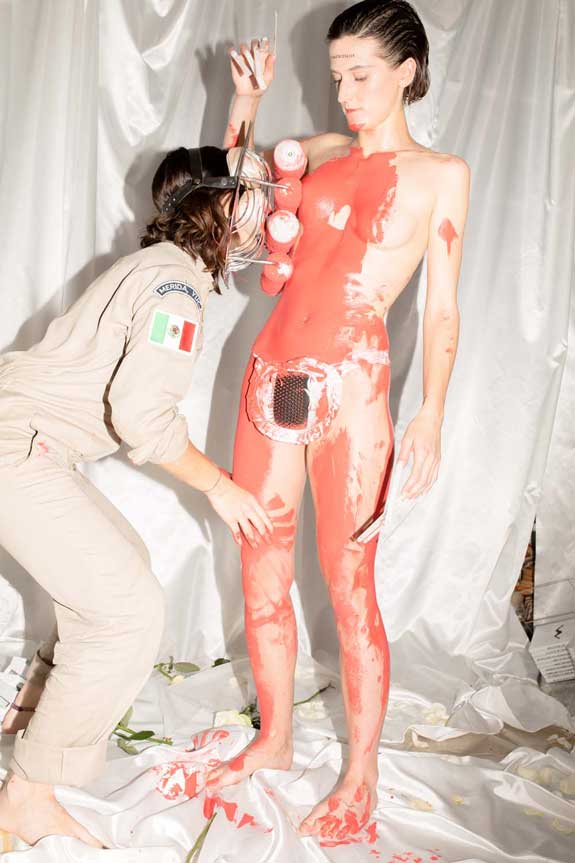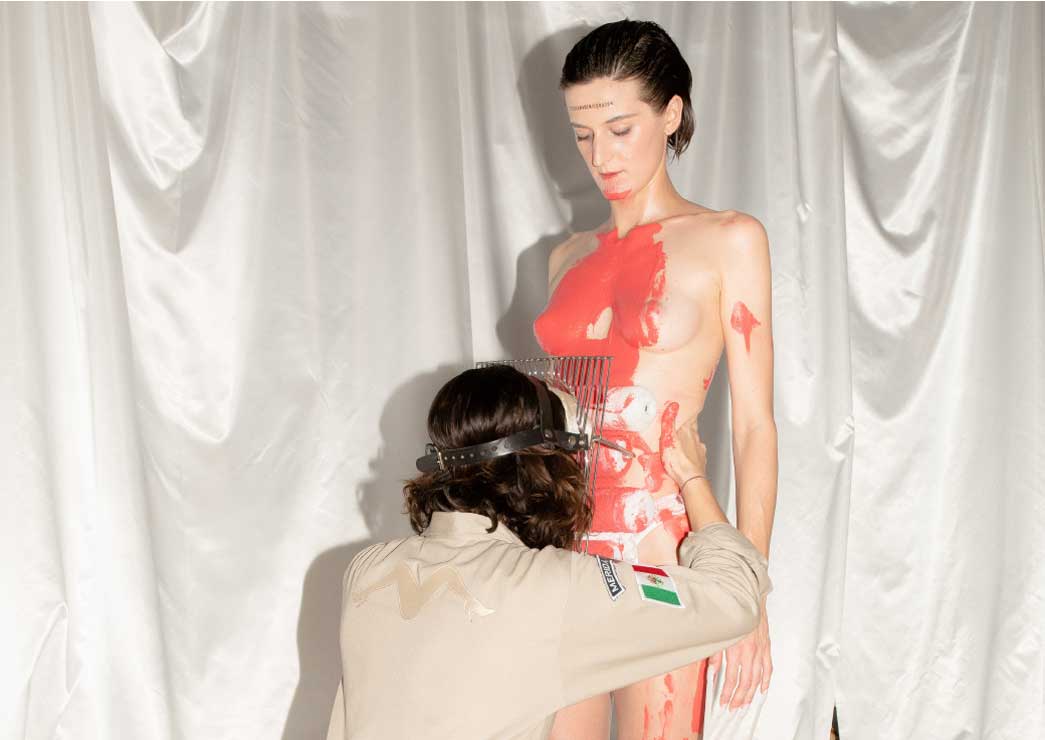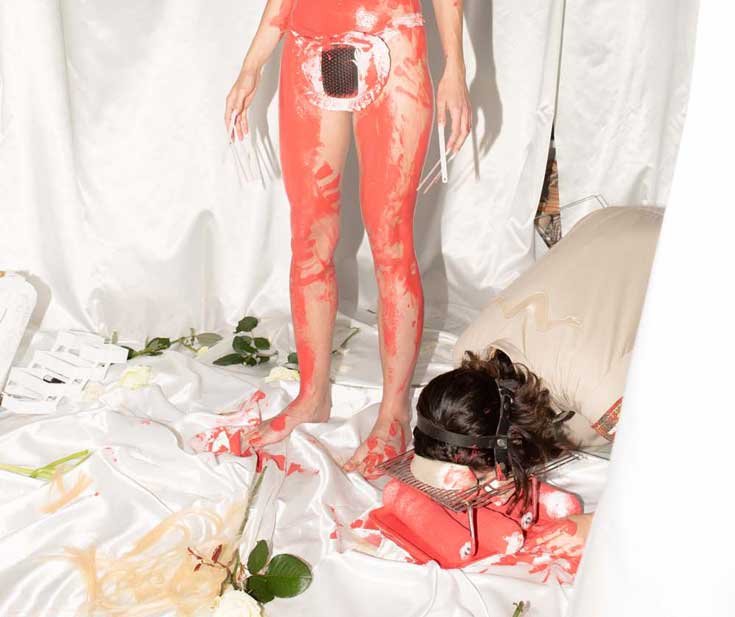This was a performance in four acts, and while it showcased new sculptures and clothes, it was also a sort of transitional piece, in the sense that it offered a preview to Las Puertas del Sentimentalismo, which would come shortly after; but also in the sense that it represented a moment of crisis for the artist. At this point, SÁNCHEZ-KANE, the brand, was in its initial stages, and Sánchez Kane, the person, found herself back in her hometown of Mérida asking all kinds of existential questions. A moment of crisis but also of intense nostalgia, led her to ponder on the themes of motherhood, origins, beauty, femininity, death and decay.
The four acts don’t really act as a concrete narrative, but offer instead a series of absurdist tableaus that propose a series of disjointed questions about the artist’s own process of crisis. In the first act, a semi-nude model appeared wearing long acrylic nails joined together with yarn, and delicate white undies with a brush-head attached to the front. She sat at the center of the tiny white-satin stage sprinkled with white roses, and presented herself as the SÁNCHEZ-KANE logo, legs spread open. Another character, a prototype of what would become a huge part of Las Puertas del Sentimentalismo, wore a vase made of fabric as a hat, a spiral patterned jacket, and arum lilies sprouting from their shoulders. In gestures that recalled Men Without Fear Miniseries, Sánchez Kane continued to explore her obsession with the way objects are displayed for their consumption. The front of this character’s pants also worked as a makeup brush holder, their cowboy boots had a portable case attached to them. Interestingly, these characters were not only people or models, but also display technology themselves, occupying a semi-sentient border, a level of slight objectification.
The second act re-articulated the main characters. The makeup brush holder had now removed their pants and was now wearing a lollipop-display dildo, with white roses hanging where the lollipops would be. The model with the extra long nails was now also a DVD stand, with a shelf attached to a tight black corset upholding a number of DVD cases. The titles on them alluded to the artist’s ongoing crisis: ‘Are you an artist or a fashion designer - the journey’, ‘Learning how to be a lesbian Mexican Catholic Mother’, ‘Unsolicited Bullshit’. Finally, a third character sat down on a chair wearing overgrown blond bangs, Sánchez Kane approached them, wearing a khaki work jumpsuit emblazoned with the brand’s logo, and proceeded to cut the bangs to a messy but appropriate length. The character then stood up and looked at themselves on the reflective Virgen de Guadalupe sticker that adorned the first character’s underwear.
The third and fourth acts were less complicated but no less intense. In the third, the character with the long nails and brush-head undies stood still as Sánchez Kane, wearing an insane mask of painting rollers, used her face to paint the model’s body and the space around her red. A messy gesture, red-hot and filled with strange desire. For the fourth act, the performance went back to the original source of our fears: mothers and religion. A mother appeared, but of course she was subverted with Sánchez Kane’s visual strategies. She wore long, spiral-like, pointy tribal boots made out of the same fabric as her chaps, weirdly coiling around her feet like snakes. She held her baby, breastfeeding them with an arum lily hanging from one of her hands. She wore a crown made of her own hair and a long glistening veil made out of a plastic shower curtain. The poignant scene, either a nostalgic return to the origins or an anxiety-ridden question about predetermined feminine expectations, signaled the end of the performance.

